5 Things You Should Always Do When Bringing Houseplants Back Indoors After Summer
Transition your houseplants to living indoors seamlessly with these expert tips to prevent shock, treat pests, and promote healthy growth.
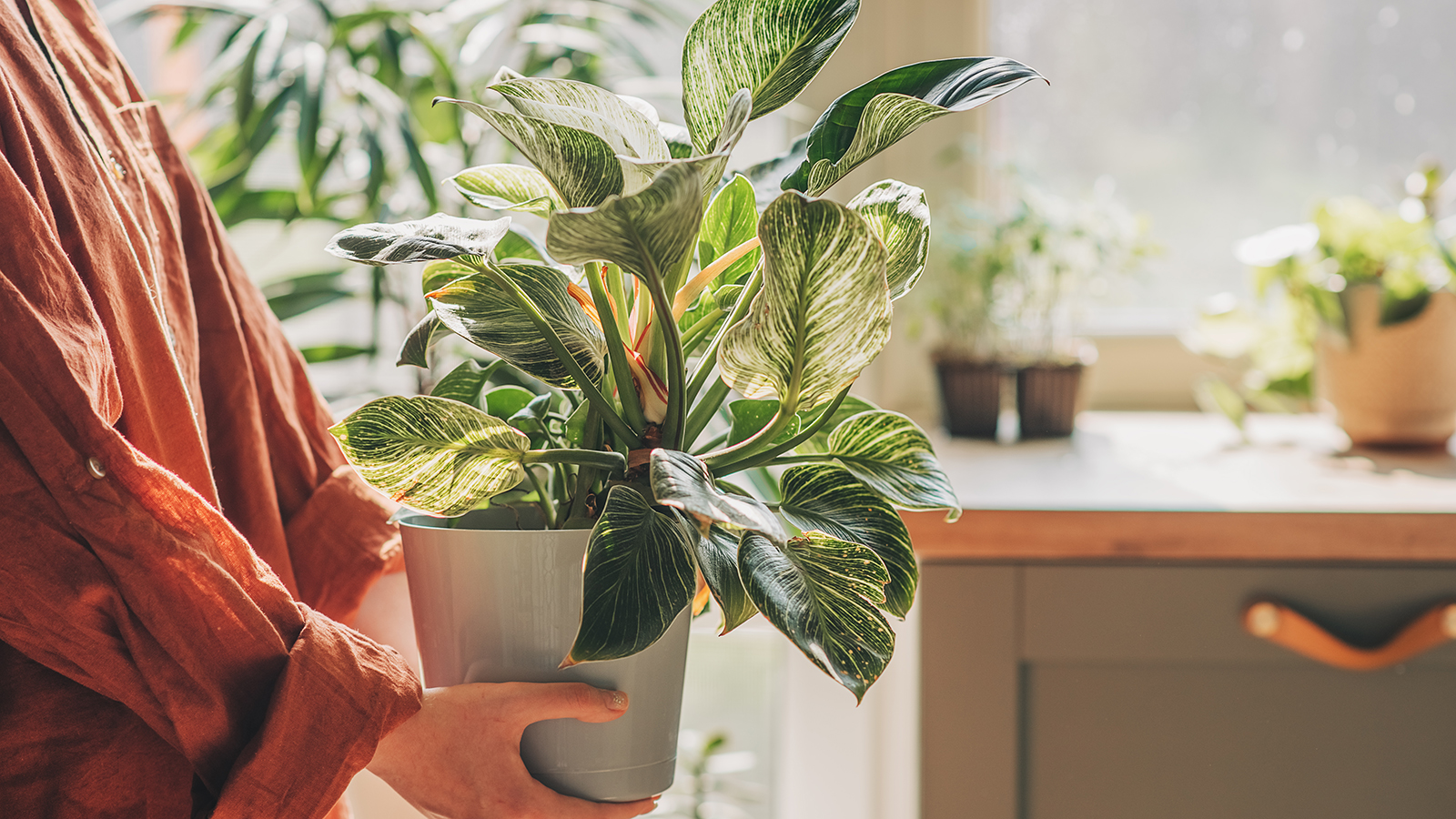

Moving houseplants outdoors in late spring to early summer is often a great idea. They will receive an extra dose of light and heat that our homes cannot provide, especially when air-conditioned, resulting in healthier plants and more growth.
Most houseplants are tropical or desert in origin and are not winter-hardy. That means you must bring them back inside before any freeze is threatened – ideally before temperatures are consistently 50°F (10°C). Depending upon your USDA hardiness zone, begin this process at least a month before the date of the first expected frost.
Winter is a rest period for most plants, so it's important to give houseplants the best care as they move indoors, to get them ready for the transition. Tender outdoor plants that you want to overwinter should go through the same steps.
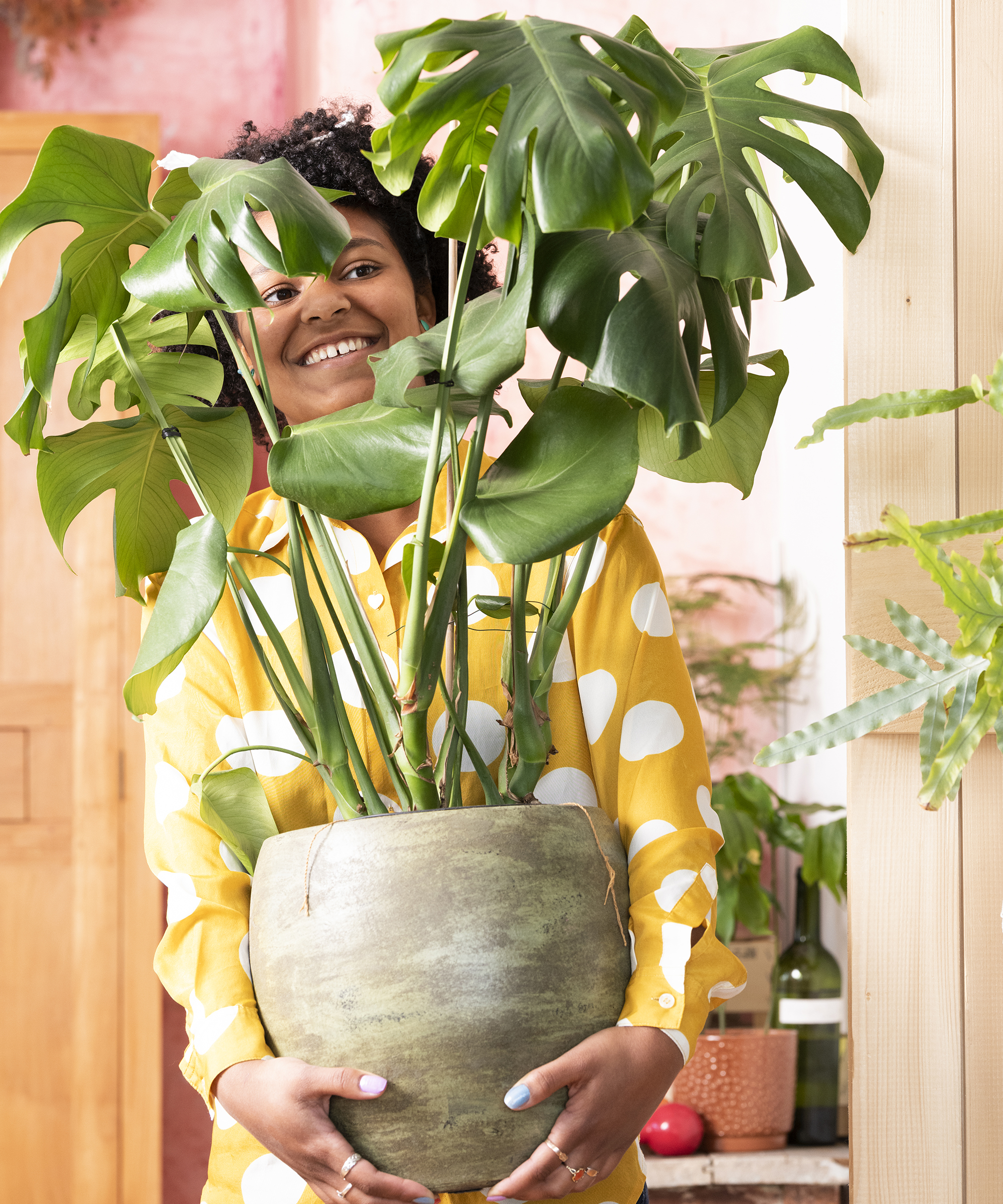
1. Look For Insects and Eggs
During their time outdoors, plants can pick up hitchhikers. Opportunistic houseplant pests may overwinter in the soil, lay late-season eggs, or simply like to dine on our plants. Aphids, whiteflies, spider mites, scale bugs, and other pests can quickly spread indoors, causing a major headache and hurting the health of other plants.
Take time to thoroughly inspect the plant and poke around in the soil a bit, taking care not to disturb plant roots. Look at both the upper and lower parts of leaves. Some insects are too small to spot with the naked eye. Place a plain piece of paper under the leaves and give the foliage a gentle shake. If the paper is dotted with tiny black specks, you may have an insect problem.
If the plant isn’t too large, dunk it in a bucket filled with water and a few drops of dish soap. Let the plant sit in the solution for an hour and then rinse it off. If the plant is large, give the leaves and stems blasts of water from a hose to rinse off pests. Use an insecticidal soap on all parts of the plant.
In addition to checking for insects, lay the plant on its side and check the root ball for rodents or even snakes.
Gardening tips, videos, info and more delivered right to your inbox!
Sign up for the Gardening Know How newsletter today and receive a free copy of our e-book "How to Grow Delicious Tomatoes".
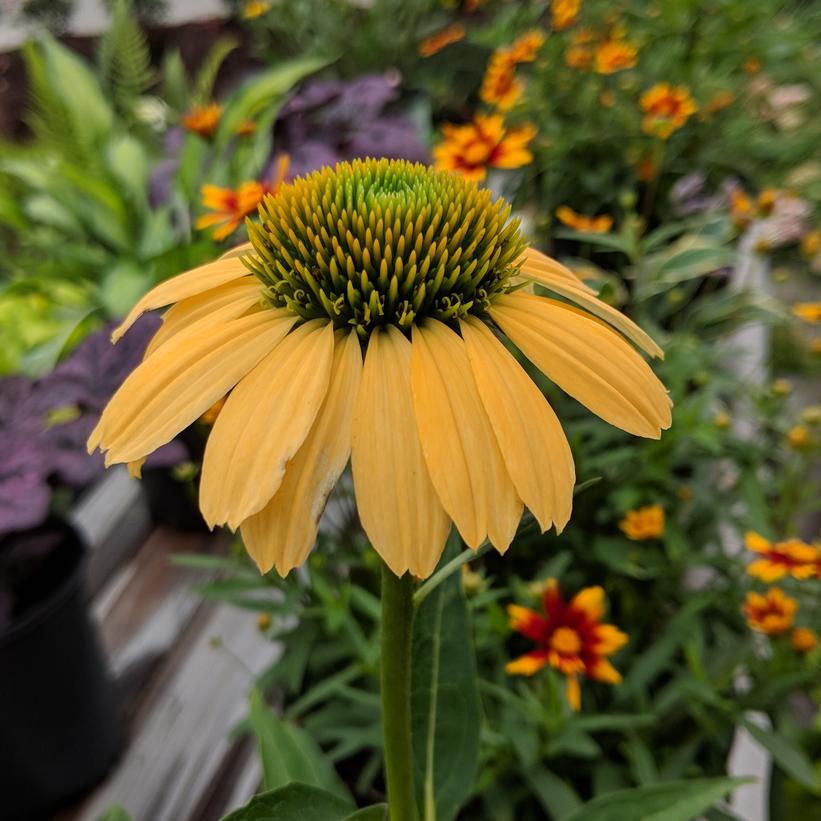
Looking for a final splash of brightness to close out the growing season? Add fall color to your garden with these plants from the Gardening Know How Shop.

2. Acclimatize Plants
Plants may be shocked by a sudden move to new temperatures and lighting conditions. Failure to acclimatize plants could result in shock in the form of dropped or yellowing leaves, wilt, or they may even develop stem dieback.
Start getting the plant adjusted a couple of weeks before the move. Set them in a dappled or low-light area. They will begin to adapt to lower light levels and the cooler temperatures formed in shady locations.
This is a similar process to hardening off seedlings grown indoors, prior to planting them out. It gives the plant time to acclimatize to the new lighting and heat situation it will experience in the home.
Once you have given the plants a period of acclimation and moved them inside, set them in an area of bright light for a week or so. Then move them to their usual locations. Don’t panic if you see some leaf drop. This is perfectly normal even if the plant had weeks of adjusted light, temperatures, and water prior to the move. Provide the usual care and let the plant get used to the home interior and it will recover.

3. Reduce Fertilizer
Stop feeding houseplants a month before moving them back inside. This will prevent new growth that is most prone to shock by the change. New growth is not desired in the winter dormant period. This is when the plant recharges and gets ready for spring growth and often flowering.
Once the plant has adjusted to the indoors, fertilize as you normally do in winter, but do it sparingly. During the cold, low-light months, any fertilizer should be well diluted or use a gentle, slow-release formula that won’t overwhelm the plant with nutrients.
With the majority of plants, their life cycle will not cause new growth in winter. They do not need high-nitrogen food, which will promote growth. A light layer of compost over the top surface of the soil is ideal for winter feeding. This will slowly break down and release nutrients to the roots.
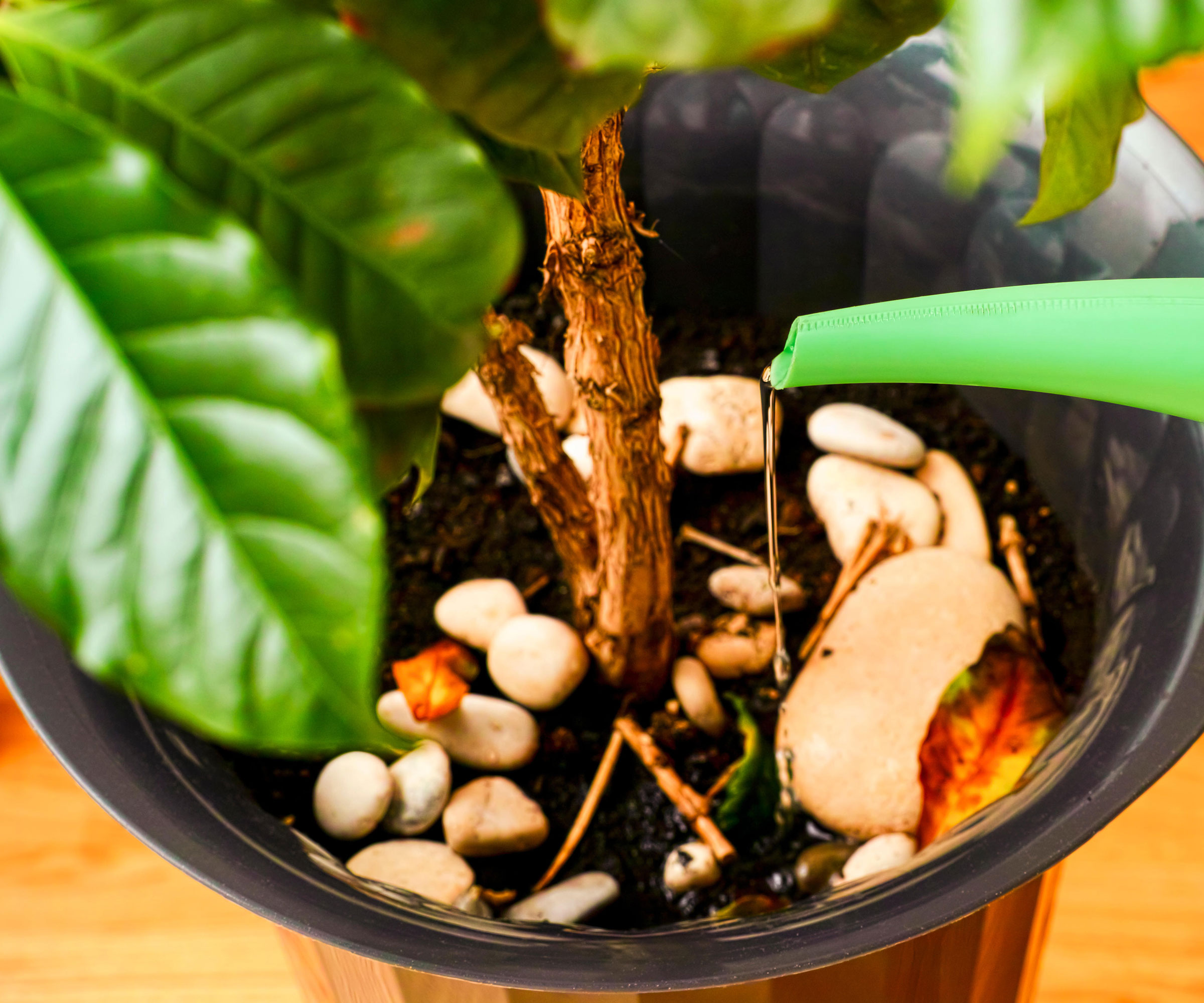
4. Reduce Water
Indoor plants during winter are dormant and not actively growing. To get the plants ready for that change, reduce watering a bit. Keep them moist enough to stay alive, but they will not need the levels of water they did during scorching summer heat.
Potted plants in summer need even more water than those in the ground because the heat causes the water to evaporate quickly. So you probably watered frequently, but indoors they will not experience the same phenomenon.
Ease up on the watering a couple of weeks before the big move. Less water will also make heavier pots easier to move.
If you fertilize consistently during the summer season, leach the soil of excess salts by giving it a thorough drench until water pours out of the drainage holes. Then let the soil dry a bit before watering houseplants again.
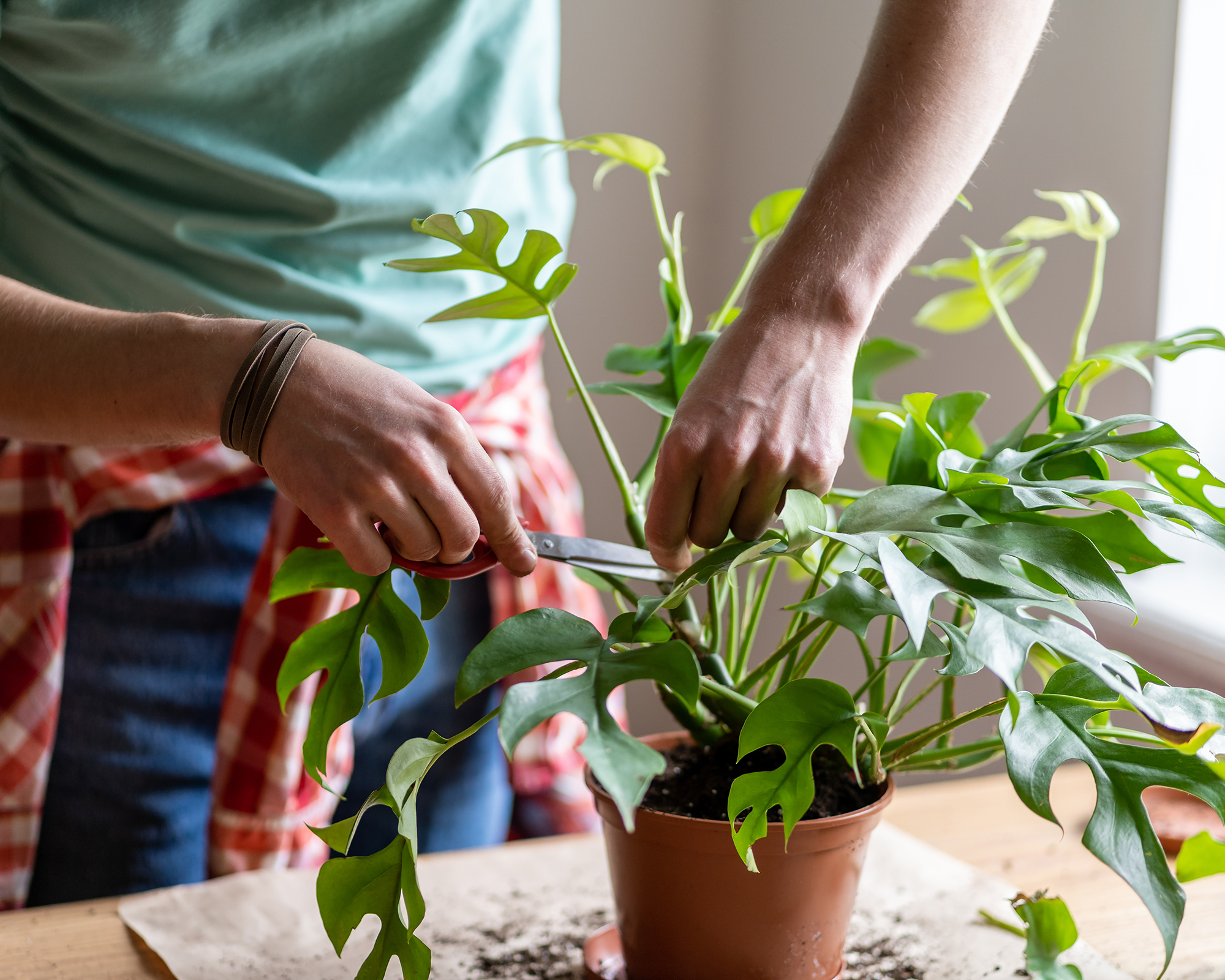
5. Deadhead and Prune
Plants likely grew a lot during their time outside. Before you move them indoors, remove spent flower heads. Prune houseplants if necessary to keep them in a smaller form, and remove stems as necessary.
Take out any dead leaves and stems. Clear the top of the soil of dropped plant material, as it could harbor pests.
Repot houseplants if they have outgrown their containers – either moving to a larger pot or dividing the plant if appropriate. This is a good time to take cuttings to root in water to make further plants.
This article features products available from third-party vendors on the Gardening Know How Shop.

Bonnie Grant is a professional landscaper with a Certification in Urban Gardening. She has been gardening and writing for 15 years. A former professional chef, she has a passion for edible landscaping.
-
 Looking For Plants To Give You The Soft And Fuzzies? Try These 5 Fuzzy Leaf Plant Options
Looking For Plants To Give You The Soft And Fuzzies? Try These 5 Fuzzy Leaf Plant OptionsLovers of texture, drama, silver foliage and tactile plants will adore these special sensory garden additions. These fuzzy leaf plant options will leave you all aglow
By Susan Albert
-
 Get Ready For A Summer Of Hummers! Grow These Full Sun Hummingbird Plants and Flowers
Get Ready For A Summer Of Hummers! Grow These Full Sun Hummingbird Plants and FlowersIf you’re lucky enough to enjoy a sunny backyard, make sure you are maxing out on your pollinator opportunities and grow these full sun hummingbird plants and flowers
By Tonya Barnett